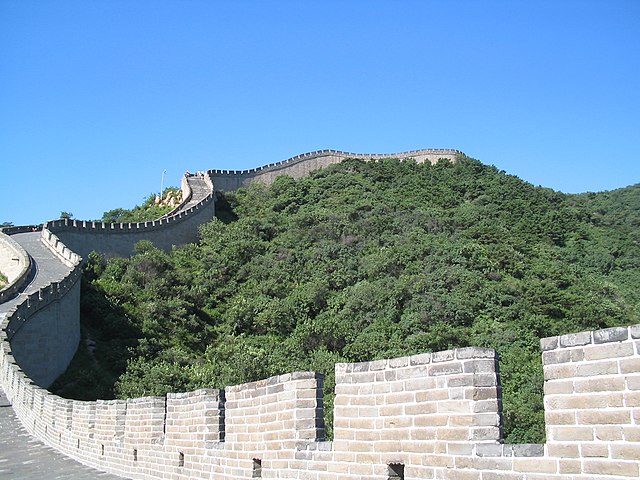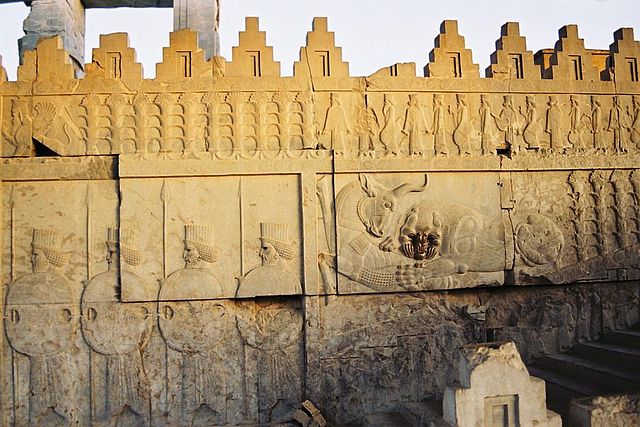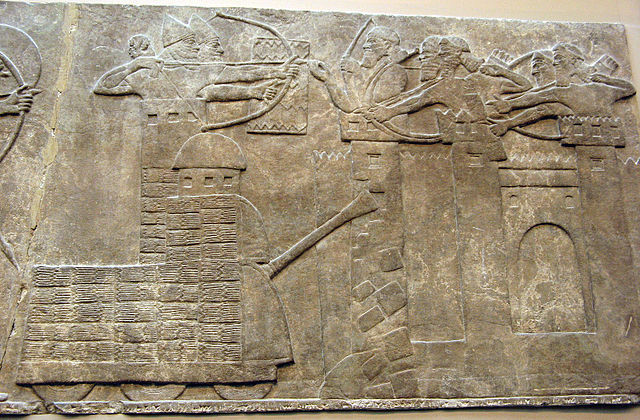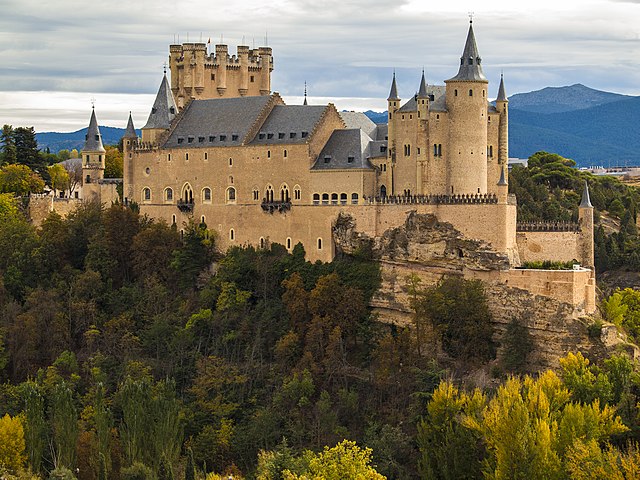A battlement, in defensive architecture, such as that of city walls or castles, comprises a parapet, in which gaps or indentations, which are often rectangular, occur at intervals to allow for the launch of arrows or other projectiles from within the defences. These gaps are termed embrasures, also known as crenels or crenelles, and a wall or building with them is described as crenellated; alternative older terms are castellated and embattled. The act of adding crenels to a previously unbroken parapet is termed crenellation.
Battlements on the Great Wall of China
Decorative battlements in Persepolis
Drawing of battlements on a tower
9th-century BC relief of an Assyrian attack on a walled town with zig-zag shaped battlements
A castle is a type of fortified structure built during the Middle Ages predominantly by the nobility or royalty and by military orders. Scholars usually consider a castle to be the private fortified residence of a lord or noble. This is distinct from a mansion, palace and villa, whose main purpose was exclusively for pleasance and are not primarily fortresses but may be fortified. Use of the term has varied over time and, sometimes, has also been applied to structures such as hill forts and 19th- and 20th-century homes built to resemble castles. Over the Middle Ages, when genuine castles were built, they took on a great many forms with many different features, although some, such as curtain walls, arrowslits, and portcullises, were commonplace.
Dating back to the early 12th century, the Alcázar of Segovia, Spain, is one of the most distinctive castles in Europe.
Built in 1385, Bodiam Castle in East Sussex, England, is surrounded by a water-filled moat
The Norman White Tower, the keep of the Tower of London, exemplifies all uses of a castle including city defence, a residence, and a place of refuge in times of crisis.
Windsor Castle in England was founded as a fortification during the Norman Conquest and was one of the principal official residences of Queen Elizabeth II during her reign.








